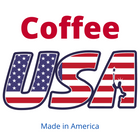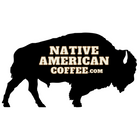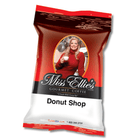What do "rainforest alliance", "fair trade", and "organic" coffee mean? "Rainforest alliance", "fair trade" and "organic" are all terms being used in the coffee world today to market coffee. All of these words have similarities and differences that make them confusing to consumers. It is difficult to purchase coffee with one of these labels on the package and not wonder what the label means and determine if it is worth the cost of purchasing the coffee with the special labeling. Fair Trade Fair Trade is an alliance that is trying to improve the lives of the coffee growers and plantation workers. Fair Trade coffee is sold to buyers who must agree to establish a relationship with the plantation and to paying a minimum floor price that guarantees the plantation workers a fair wage. Fair Trade certification is overseen by the Fairtrade Labeling Organizations International and the US TransFair USA. The Fair Trade program has been in place as far back as the late 1970' and currently benefits more than 800,000 farmers around the world. There are more than 45,000 retailers who carry certified Fair Trade coffee. Many other products in addition to coffee can be certified as Fair Trade products although coffee is the biggest seller of the group.Plantations that are part of the Fair Trade co-op benefit in many more ways than just a regulated price for their coffee. The co-op also reinvests part of the money in the community and in helping the plantation to become organic and add even more selling points to its product. The downside to Fair Trade is that only small, poor farms can be part of the Fair Trade co-op. This restriction keeps many farms from being able to sell their product to businesses who insist on a Fair Trade label. Rainforest Alliance The Rainforest Alliance is an alliance developed to insure that the coffee farmers and plantations are using sustainable methods to grow their coffee and to protect the land, environment, and the quality of the product through the limited use of chemicals.The Rainforest Alliance is similar to an environmental watchdog that oversees coffee growing to make sure it is not damaging the environment. Unlike Fair Trade, the Rainforest Alliance is concentrated on the environment and farm management practices rather than the laborers on the farm. Critics argue that there is a lot of big money from big name companies being poured into this program that makes the enforcement of standards become political. Organic Coffee can be labeled organic along with being Fair Trade or Rainforest Alliance labeled. Organic is a label given to coffee that is grown under strict conditions that include no chemical use, rotating land used to grow crops, not growing organic coffee within a set number of feet from other non-organic crops and many other regulations. Organic certifications are desired certifications because the coffee commands a higher price on the market. Many Fair Trade coffee plantations are also organic plantations or are in the process of becoming organic.Rainforest Alliance, Fair Trade and Organic are all terms that are found on the supermarket shelf when looking for a bag of coffee. They each mean different things but at the same time they all strive to change the way the world of coffee is viewed. A beverage that is loved by millions of people and sustains the livelihood of many people around the world while working to preserve natural resources at the same time is the bottom line of labeling that contains any of these terms.
Coffee, Coffee, Coffee
Different Types of Coffee Roasts
Different types of coffee roasts produce different flavors of coffee and are what makes each one special in its own unique way. Many people are confused by the vast assortment of roasts available on the market and simply choose one after another until they find one they like. Understanding the difference between the roasts can be the first step in choosing a coffee without having to purchase coffee after coffee in the search for that perfect one.The roast of the coffee is determined during the process of heating the coffee beans until they reach the stage that determines their flavor. The color of the bean is determined by how long the roasting process lasts just as the flavor of the coffee is determined by the roasting process. Overall, the longer a bean is roasted and the hotter the temperature the roasting is done at the oilier and darker the coffee bean will be when finished. Although there are not guidelines for what a coffee roast is named, there are some roasts that are commonly seen and are the same regardless where the roasting process is being done.
Recipes for Coffee Drinks
Coffee recipes aren't usually too complicated, and typically just involve a little addition or two to your standard cup of coffee. If you are getting tired of the same cup of coffee every morning, add a few new recipes to your collection. Just remember, when making flavored coffee drinks it is always best to use a good, BOLD gourmet coffee.Mayan CoffeeThis is a very sweet cup of coffee that is very popular with people who enjoy their cup, but rather a milder drink. Chocolate and sugar make it addicting. 6 to 8 tbs of ground coffee 1 tbs ground cinnamon 1/4 tsp ground nutmeg 1 cup milk 1/3 cup chocolate syrup 1/3 cup sugar 1 tsp vanilla extract Use the ground coffee, cinnamon and nutmeg to brew up about 4 cups of coffee. Stir together milk, chocolate and sugar in a small saucepan and heat until the syrup is completely dissolved. Serve coffee into 4 cups, and add about a quarter of the chocolate mixture into each cup. Serves 4.Hot Honey CoffeeIt doesn't take a lot of additional ingredients to make a cup of coffee come alive. All you need is a little honey and milk, and you'll find a whole new taste. 2 cups brewed coffee 1/2 cup milk 6 tbs liquid honey In a saucepan, combine everything and heat until the honey is completely melted into the coffee. Trying to stir the honey directly into hot coffee usually won't work, it needs to be on a heat source for a few minutes. Pour into two cups and serve. Serves 2.
Buying Instant Coffee | Instant Coffee
Buying instant coffee is a little simpler than buying standard coffee grounds, because there aren't as many varieties and choices out there. People do still prefer to brew their coffee but having some instant on hand can be practical for those times when you just can't use your usual coffee maker. Just add hot water, and you have coffee in seconds without any machines. Definitely worth having in the pantry.The usual way of buying instant coffee is a jar of dried coffee crystals. The crystals are just liquid coffee with the water drawn out, so it's still "real" coffee. Add a tablespoon or so to boiling water, and stir. Folgers and Taster's Choice are two of the biggest brands in instant coffee there are many companies that make good instant coffee. Nescafe and Maxwell House are two other popular brands that carry instant coffee granules.One of the latest innovations has come from the popular single-serve packets of drink mix for bottled water. Using the same idea, you can now get instant coffee "sticks". Slim little packets of instant coffee, already measured to be used for one cup of coffee. Perfect for coffee portability. You can even buy instant coffee this way from Starbucks, they carry it in Italian Roast and Colombian. Though you are probably the most familiar with these types of coffee crystals, it's not the only way to buy instant coffee. There are some new products out that take a different approach. Java Juice is one such product. Their instant coffee is a liquid concentrate, packaged in little foil packets. You use them to make coffee in the same way as the crystals. Just empty a pouch into a cup of hot water, and you're done. Being liquid, it does dissolve a little quicker though even the crystals melt almost instantly.






